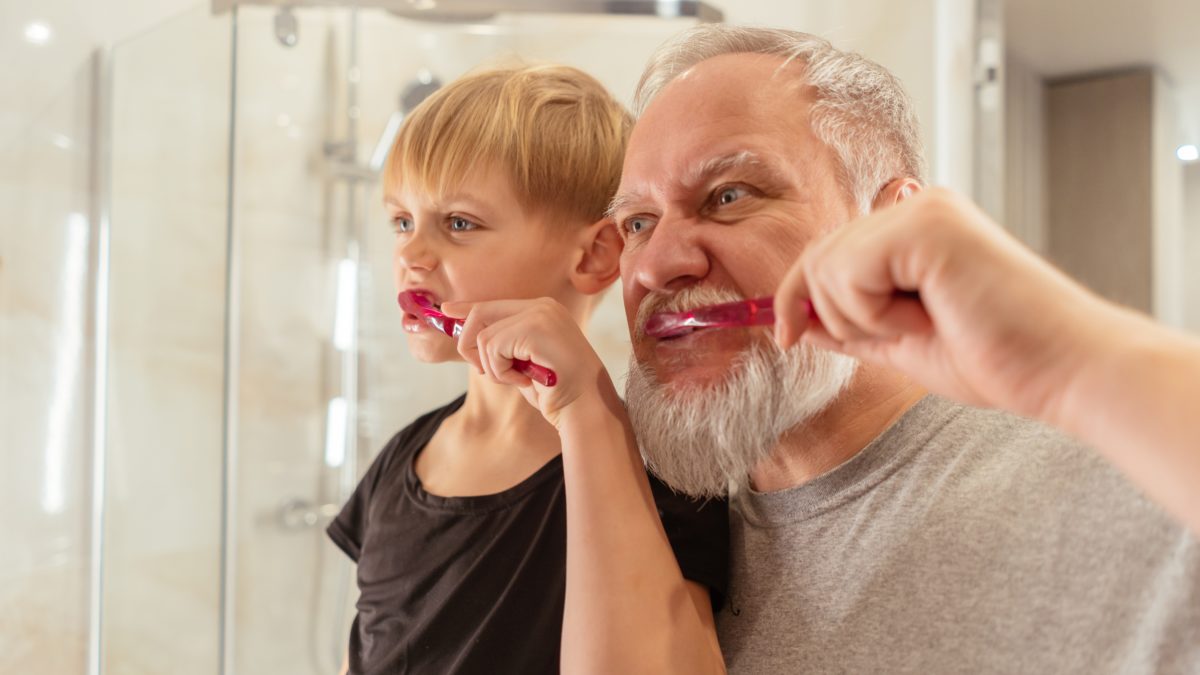I’m assuming that if you are reading this, you know that our brain has two hemispheres — the left brain and the right brain. The logical and analytical functions are associated with the left brain, while the creative side of brain is the right hemisphere.
We live in a logic dominant world, for the most part, which heavily relies on the left brain. However, it’s not true to see any side of the brain as better than the other. They both work together as a team and it is very necessary that we use both regularly for optimal function. Tuning more into the right brain can be very beneficial, so make sure to pay attention to both sides of your brain.
Left Brain vs Right Brain – What is the Difference?
The left brain is the logical thinking mind, able to solve problems and think of solutions. It’s the analytic and objective side of the brain. Whereas the right brain, sometimes called Gestalt, has to do with feelings. It is the impulsive, intuitive, artistic, and also creative side of the brain. It is driven by our feelings and emotions, our beliefs and the subjective thinking of what we do. Read below for some right brain exercises that you can practice every day to encourage creativity and promote right brain activity.

Understanding ‘Right-Brained People’
Notions of “right-brain characteristics” are widespread, widely accepted, and quite possibly wrong. Researchers are still studying brain laterality to determine which parts of the brain dominate when performing certain brain functions.
Right brain dominant people are supposedly creative, free-thinking, and intuitive – but these traits are most likely not linked solely to one side of your brain.
The terms “left-brained” or “right-brained” should be understood as the way certain individuals think, not which side of their brain they use more.
How to Improve the Connection Between Left and Right Brain
Your brain behaves like a muscle. When you train your brain, it becomes stronger and functions more efficiently. This helps you to learn things and master problems more easily.
The reason for these right brain exercises is to help stimulate creativity, the feeling and imaginative side of your brain, and it shouldn’t be neglected. Check out our brain training courses to learn more.
These activities promote more use of the right side of the brain, so it works together with the left and we don’t forget how to play, have fun, explore and access the creative potential we all have inside.
How to Train Your Brain with Right Brain Exercises

Right Brain Writing Exercises
1. Morning Pages / Automatic Writing
Morning pages were introduced to the masses in the book called The Artists Way by Julia Cameron. In short: it’s a time for free writing. Not even thinking about what to write, just pen to paper and see what flows. Julia Cameron recommends writing 3 pages in the morning. I got a small journal and found it manageable to fill 3 pages each morning.
This book goes into a step-by-step guide to dive into your inner artist, but you can try this for yourself without reading the book. The point is to practice free writing so you can access this creative side of your brain that we sometimes neglect in this logic-brain dominated society that we live in.
Tips:
• Re-read what you wrote – perhaps there are hidden messages.
• Leave a journal and pen right next to your nightstand.
• Don’t think, just write.
• Set a timer if you prefer not to do a set number of pages and write for whatever time you have!
• Try creative writing a story and see what your mind can come up with.
• Journaling (there are plenty of journals that have prompts) if you find the automatic writing difficult. Or perhaps reflect on your day.
• Create a bucket list.
• Think of all the things you have wanted to do in your life and just let the pen flow. You may be surprised that comes to mind.
2. ‘Talk’ to Your Hands!
Another common right brain writing exercise working with both sides of your brain:
• Have a conversation with each hand, starting with your right hand, and ask, “How are you today?” and switch to the left hand and write your reply.
• Then switch back to the right hand. Then left hand, and so on. This connects both the left and the right brain.
• Note the type of responses that come from each hand.
Creative Exercises for the Right Brained
3. Try an Adult Colouring Book
This has been said to be meditative and relaxing. Allow yourself to be creative with colours and put you in a nice and relaxed state. In addition to exercising the right side of the brain, colouring books help take your attention away from your worries and keep you focused on the present moment.
4. Photography
One of the best exercises for the creative side of your brain is photography. Digital art photography helps you process the world as shapes and images — a right-brain activity.
The possibilities are endless! Do you like landscapes? Portraits? Close-up objects? Play with the lighting and shadows!

5. Draw / Paint
Maybe choose a theme or just put a pen/brush in your hand and see where the paper takes you. The right brain is dominant in visual and spatial relationships. Art therapy uses drawing and painting to optimise your brain function and integrate your right and left brain.
6. Mould Clay or Sculpt
Use your hands to ignite your tactile senses and make something abstract, or even try to recreate something from a photo or memory. Crafting worry dolls is a right-brain training exercise that can help you explore your fears and anxieties using your creativity and intuition.
7. Play a Musical Instrument or Sing
Right-brained people typically have a great love for music, which actually gives your entire brain a workout. The right side of our brain processes melodies while the left side handles words. When your left brain begins engaging in self-criticism, concentrating on a tune can help bring you into focus.
Physical Exercises for the Right Side of the Brain
8. Do a Puzzle
Puzzles are one of the most popular right-brain activities. Matching the shapes and colours of different pieces exercises your right brain, while your logical left brain organises the loose pieces into their respective positions. Putting together puzzles can improve visual-spatial reasoning and short-term memory.
9. Cooking
Here’s a tasty way to train your brain: open your pantry or fridge and try coming up with your own creative twist on a classic recipe. Concentrate on the aromas, flavours, and textures of the food, and don’t be afraid of unusual combinations like goji berry soup.
10. Garden/Yard Work
Feel the senses as you work with the earth/land. Maybe even remembering high school biology and how plants grow. Working in the garden or yard involves the creative side of your brain and many other brain functions, while the physical activity of gardening provides exercise and tactile learning.

11. Yoga
I recommend downward dog. Among the many other benefits of yoga, downward dog increases blood flow to the brain. This helps alleviate depression and brain fog. Your right-brain exercises will be much more productive if your neck, back, and body are also properly exercised.
12. Dancing
Dancing is one of the easiest and most enjoyable right-brain activities. Neither special skill nor equipment is required. All you need to do is shake your body and let the motion guide you.
Free flow into a dance with any movement, to start on the right brain. Learn a short choreographed dance to add into the left brain!
13. Qi Gong
Qi Gong, ancient Chinese exercises that optimise mind, body, and spirit, can help you train your brain to still the chattering wasted energy of your left brain. Qi Gong uses movement, breathing, and meditation to bring both sides of your brain into balance with your body.
14. Right-Brain Training with Meditation/Observation/Visualisation
Meditation is an amazing exercise to train your brain. It keeps you grounded in the present moment with a series of thoughts bouncing from the left to the right side of the brain and vice versa. See our post on meditation for more on this.
Effortless Exercises for the Right Side of Your Brain

15. Breathing Out of Your Left Nostril
Breathing out of your left nostril can help activate the right brain. Note that this hasn’t been scientifically proven but some people claim it works and can’t hurt to try and see for yourself.
16. Brush Your Teeth with Your Non-Dominant Hand
This is a great exercise as you can pair your right-brain activation exercise with a task you do every day.
17. Chew Your Food Slowly
You’ll be surprised at the impact just thinking about using the right side of your brain can have.
• Ideally, chew 32 times. This one I find takes a lot of practice!
• Pay attention to all the sensations whilst eating.
• Perhaps pick one mindful meal or snack per day to start. The senses can be focused on by your right brain and then the left brain can come in and say “hm, is that turmeric?”
• Note: Talking, watching TV, driving, or being stressed while eating affects your digestion.
The reason for these right brain exercises is to help stimulate creativity, the feeling and imaginative side of your brain, and it shouldn’t be neglected. Hope you have enjoyed these right brain exercises for more of an overall balanced brain working together with the left! What are you going to put into action from reading this?
Frequently Asked Questions
Many believe that the right hemisphere of the brain is responsible for creativity, while the left hemisphere handles analytical and logical tasks. In practice, both sides play important roles in the creative process. Your right brain provides inspiration for a tune or a picture. The left brain chooses the appropriate materials and arranges your musical composition. And as you become more experienced in your art, your creativity grows increasingly left-brained as your work relies on familiar movements and routines.
Your right brain controls creativity and imagination, including any task that is deeply connected with visual perception. Emotion is a right side of brain function, as are visual and spatial relationships. But while each hemisphere specialises in different jobs, almost every activity involves both sides of your brain. For example, recognising faces is primarily a right-brain activity, but connecting a name to that face involves the left brain.
According to popular belief, right-brained people rely primarily on emotion, creativity, intuition, nonverbal communication, and global reasoning rather than left-brained logic and analysis. Though many of these right-brain characteristics are in fact handled by the right hemisphere, there is also a great deal of information exchanged between brain hemispheres in any activity. You should cherish your right-brain skills, but you should also work to improve communications between both sides of your brain.
Many right-brained skills are notoriously underpaid. (They call them “starving artists” for a reason). But right-brained people are not doomed to a life of poverty. Right-brained people can use their creativity and their emotional intelligence in a number of well-paid jobs.
Here are nine high-paying right-brain dominant careers:
1. Elementary school teacher
2. Therapist
3. Fashion designer
4. Psychologist
5. Animator
6. Human resources administrator
7. Recreational director
8. Graphic designer
9. Interior decorator
Traditionally, left-brained jobs like financial analyst and civil engineer have paid better than creative right-brained jobs. In practice, left-brained people can have difficulty with situations where they have to think outside the box, while right-brain dominant people struggle with structure and record-keeping. Both sides of your brain are necessary for any career, and most successful professionals have a good right-brain/left-brain balance.



